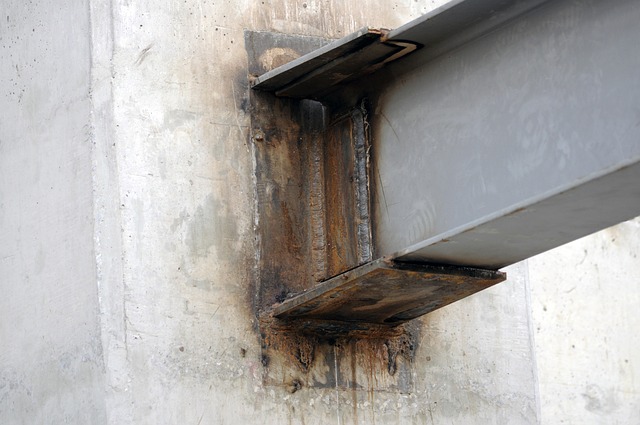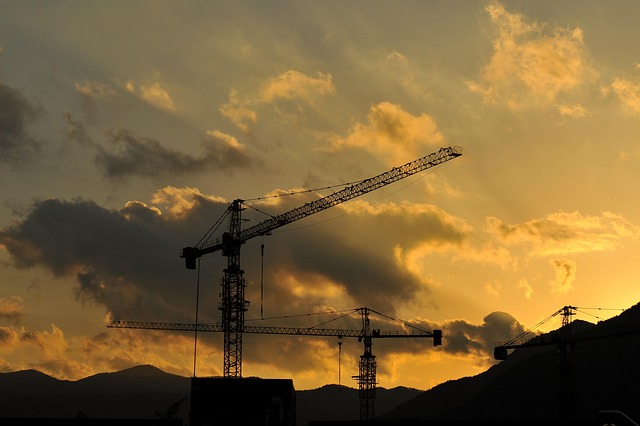Glue Laminated Beams (GLBs), engineered wood products made by gluing multiple layers of lumber, offer enhanced strength and durability for construction, furniture, and manufacturing. Boasting environmental benefits over steel beams, GLBs are suitable for residential to commercial projects. Production involves meticulous timber selection, lamination under controlled conditions, and extensive testing. The growing market is driven by demand for sustainable materials and innovative manufacturers emphasizing product specialization and technology.
The glue laminated beam, a revolutionary structural component, has been transforming the construction industry with its exceptional strength-to-weight ratio. This article provides an in-depth review of the current market for these innovative beams. We’ll explore their definition, material science, and construction methods, delving into the latest trends, key applications, manufacturing processes, and quality control measures. Additionally, we analyze the competitive landscape and offer insights into future projections for this game-changing product.
- Glue Laminated Beam: Material and Construction Overview
- Current Market Trends for Glue Laminated Beams
- Key Applications of Glue Laminated Beams in Construction
- Manufacturing Process and Quality Control Measures
- Competitive Landscape and Future Projections
Glue Laminated Beam: Material and Construction Overview

A Glue Laminated Beam (GLB), also known as a laminated timber beam or glued wooden beam, is an engineered wood product created by gluing together multiple layers of dimensional lumber. This construction process, often involving both vertical and horizontal grains, enhances the structural integrity and strength of the final product. Each layer, carefully selected for its properties, contributes to the overall stiffness and load-bearing capacity of the GLB, making it a versatile and durable building material.
GLBs are primarily manufactured through two main techniques: parallel or edge gluing. Parallel gluing involves aligning the wood layers side by side, while edge gluing uses planks glued at their ends. This innovative design offers significant advantages in terms of strength and durability, especially for industrial applications like construction, furniture making, and manufacturing. Their versatility allows them to be used in various projects, from structural supports in buildings to aesthetic elements in furniture designs. However, despite their benefits, it’s crucial to consider potential drawbacks such as cost, maintenance requirements, and specific environmental conditions that can impact their performance. For more information, visit us at unalam.com.
Current Market Trends for Glue Laminated Beams

The current market for glue laminated beams is witnessing a surge in demand driven by the growing need for efficient and sustainable construction materials. A glue laminated beam (GLB) is defined as a structural element created through a sophisticated glue lamination process, fusing together multiple layers of wood to enhance strength and stability. This innovative technique has become a game-changer in the construction industry, especially in regions where traditional building methods face challenges due to climate or availability of resources.
Construction projects across various sectors, from residential to commercial, are increasingly adopting GLBs due to their light weight, superior load-bearing capacity, and reduced environmental impact compared to conventional steel beams. As the market evolves, contractors and builders are finding budgeting for glue laminated beams in construction more appealing, given their competitive pricing and long-term structural integrity. This trend is reflected in the growing availability of GLBs at local stores, with suppliers like those found at 18 Clifton St, Unadilla, NY 13849, catering to the diverse needs of the construction sector.
Key Applications of Glue Laminated Beams in Construction

Glue laminated beams, often referred to as glulam beams, are engineered wood products created by gluing together multiple layers of dimension lumber. This innovative construction method has revolutionized the industry, offering efficient and strong structural components for various applications. The key advantage lies in their versatility; glulam beams can be tailored to specific project needs, providing designers and builders with a flexible alternative to traditional steel or concrete.
In residential construction, glue laminated beams excel in creating open-concept spaces by supporting extended spans without intermediate supports. Their lightweight nature and ease of fabrication make them ideal for complex structural designs, ensuring faster building processes. Furthermore, glulam beams contribute to sustainable construction practices as they utilize wood resources efficiently, a renewable material. For more information on the engineering aspects and optimizing dimensions, get in touch with us at (607) 369-9341. The future of glue laminated construction looks promising, with ongoing developments focusing on enhancing their performance and exploring new applications.
Manufacturing Process and Quality Control Measures

The manufacturing process of Glue Laminated Beams (GLBs) involves carefully selecting and treating individual timber strands, which are then glued together under high pressure to form robust structural components. This intricate process begins with the debarking and cutting of trees into thin strips, ensuring a consistent grain pattern for maximum strength. The selected timbers undergo rigorous quality checks to meet stringent standards for glue laminated structural components. Each strand is inspected for defects, moisture content, and dimensional accuracy before being prepared for lamination.
Once ready, the timber strands are arranged in specific patterns, depending on the beam’s intended use, and glued together using high-performance adhesives. The gluing process itself involves subjecting the stacked layers to substantial pressure and precise temperature control to ensure thorough bonding. After laminating, the beams undergo various testing procedures for glue laminated beams, including strength, stiffness, and dimensional stability assessments. These stringent quality control measures ensure that GLBs meet or exceed industry standards, providing a reliable solution for construction projects requiring durable and versatile structural support. For more detailed information about our manufacturing processes and quality assurance protocols, visit us at unalam.com.
Competitive Landscape and Future Projections

The competitive landscape within the glue laminated beam market is dynamic and characterized by a mix of established manufacturers and innovative startups. Key players differentiate themselves through product specialization, technological advancements, and strong focus on sustainability. The global demand for eco-friendly construction materials has significantly boosted the growth of this industry, with many companies optimizing their production processes to meet the rising need for glue laminated beams (GLB). These beams are known for their exceptional strength and durability, making them a preferred choice in various applications, from commercial buildings to residential construction.
Future projections for glue laminated construction are promising, driven by the increasing adoption of wooden structures in sustainable building practices. As architects and builders seek innovative ways to reduce carbon footprints, GLBs offer a compelling solution due to their structural integrity and environmental friendliness. Optimizing dimensions of glue laminated components is another area of focus, with advancements in design software enabling more precise calculations for efficient use of materials. Interested parties are encouraged to give us a call at (607) 369-9341 for more insights into the applications of glued wooden beams and how these future prospects could shape the construction industry.
The glue laminated beam (GLB) market is experiencing a significant surge, driven by its versatility and growing adoption in construction projects worldwide. As defined, GLBs offer exceptional structural integrity and are crafted through a meticulous manufacturing process, ensuring superior quality. Current trends indicate a rising demand for eco-friendly building solutions, which has led to increased interest in GLBs as a sustainable alternative. Key applications span from residential to commercial structures, highlighting the beam’s adaptability. With ongoing innovations and a competitive landscape filled with specialized manufacturers, the future of GLBs looks promising, poised to revolutionize construction practices even further.














